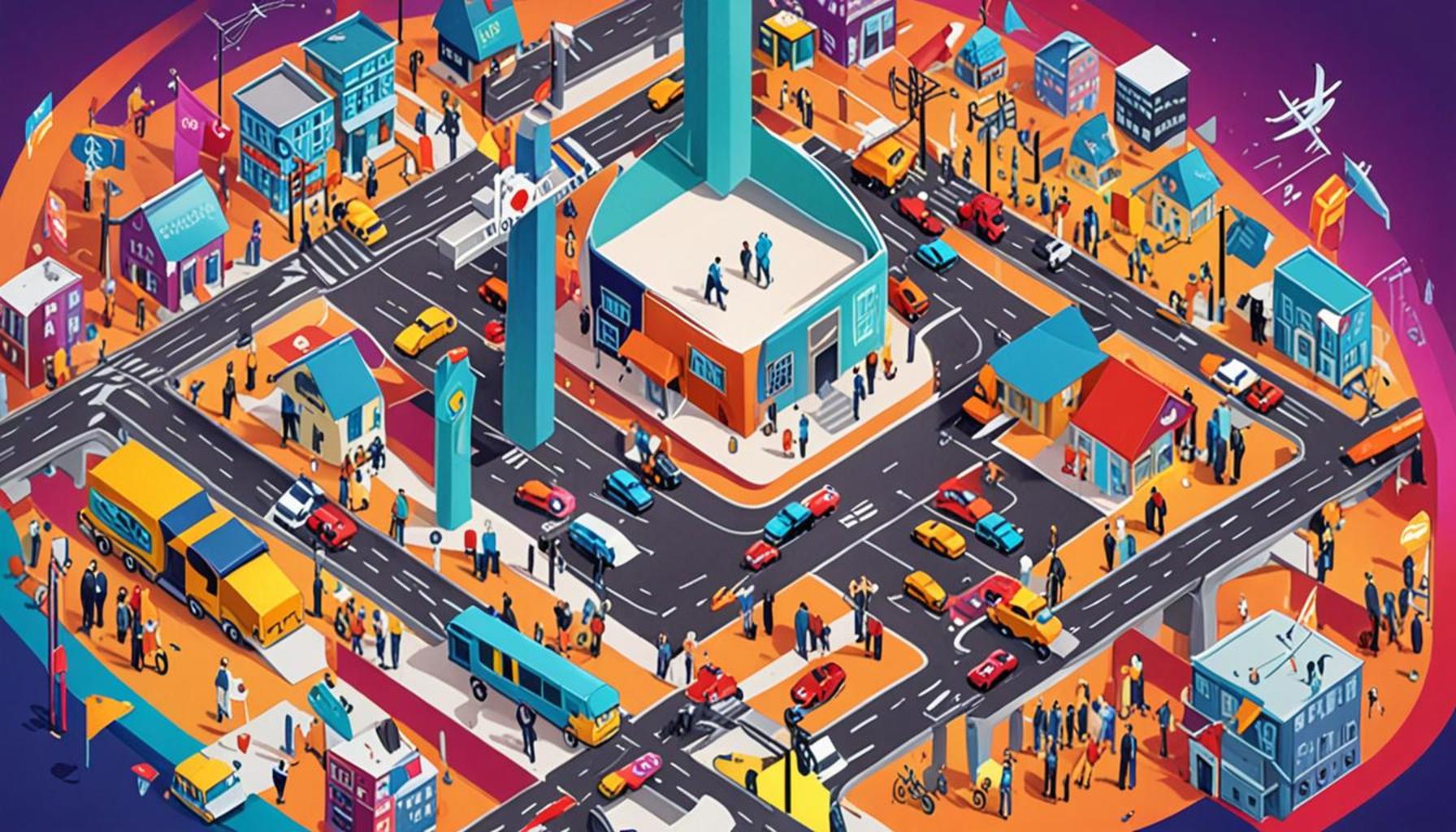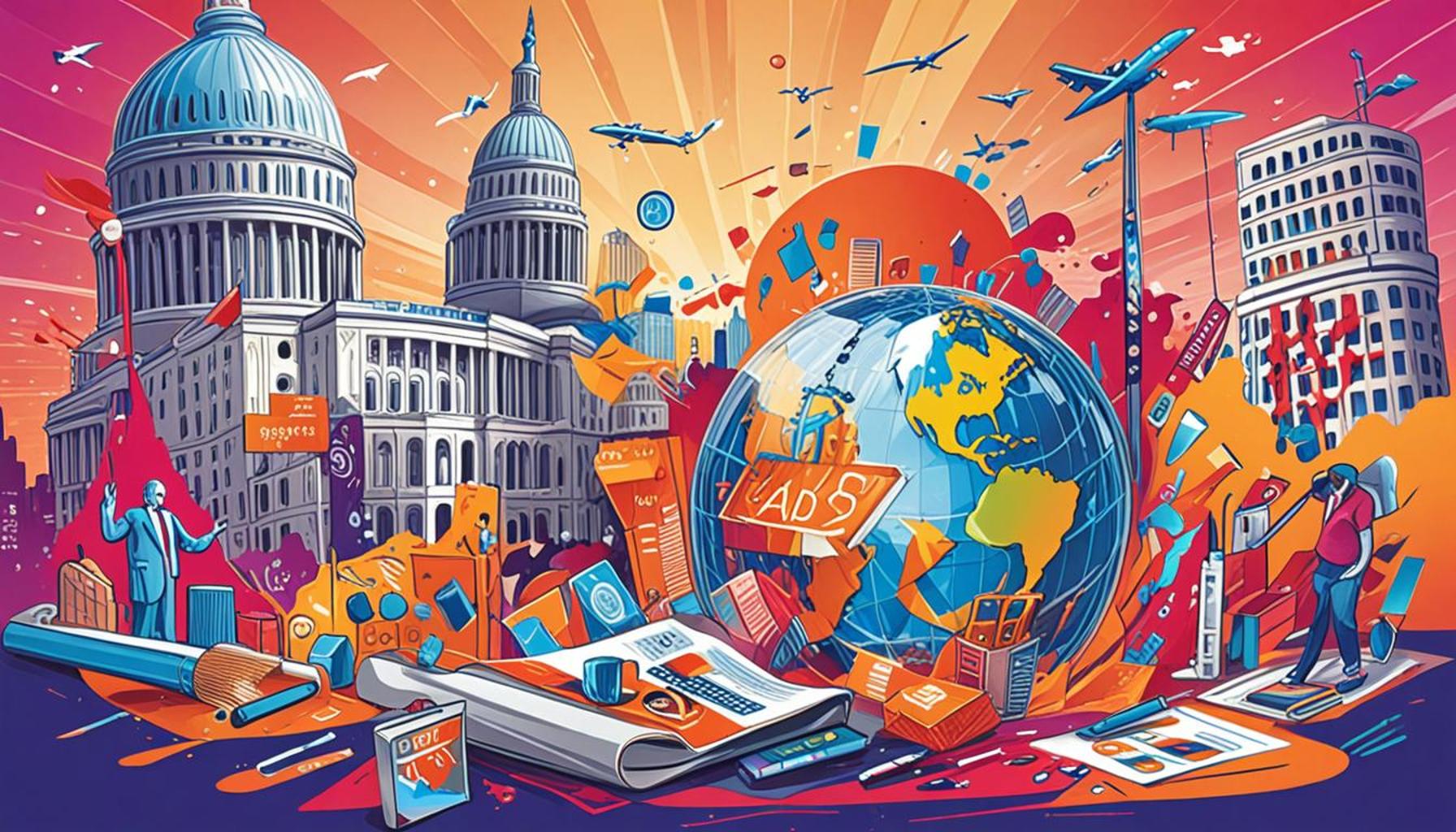The Importance of Storytelling in Brand Promotion on Social Media

The Power of Storytelling in Brand Promotion
In today’s digital landscape, storytelling has emerged as a pivotal tool for brands aiming to connect with their audience on social media. It goes beyond mere advertisements, creating a narrative that resonates with consumers’ emotions. In an age where attention spans are fleeting, the ability to tell engaging stories is more important than ever. Here’s why storytelling is essential for brand promotion:
- Engagement: Compelling stories grab attention, foster interaction, and build a community around the brand. For instance, brands like Airbnb share customer experiences through the journeys of travelers, illustrating real-life stories that encourage engagement through likes, shares, and comments.
- Trust: Authentic narratives cultivate trust, making brands more relatable to their audience. When a brand shares its origin story, such as TOMS Shoes’ mission of giving a pair for every pair sold, it not only builds credibility but connects with a socially conscious audience.
- Memorability: Stories often stick with consumers, increasing recall and brand loyalty. Consider L.L.Bean’s annual holiday campaign that features storytelling around family traditions and outdoor adventures. This emotional connection makes the brand memorable during the busy shopping season.
Successful examples of storytelling in branding include companies like Nike and Coca-Cola. Their marketing campaigns often feature stories that highlight shared values and experiences, such as perseverance and happiness. Nike’s “Just Do It” campaigns consistently showcase athletes overcoming obstacles, which not only inspires viewers but also aligns the brand with individual journeys of struggle and triumph. Coca-Cola’s advertisements often celebrate moments of connection—whether it’s family gatherings or friendships—reinforcing the idea of happiness that comes with sharing a Coke.
Research indicates that storytelling can enhance engagement rates by over 300%, revealing a significant advantage for brands embracing this technique. As social media platforms like Instagram, TikTok, and Facebook evolve to prioritize engaging content, storytelling will invariably shape the way brands communicate and market themselves online. For example, Instagram Stories offer brands a unique avenue to share raw, real-time narratives that can connect deeply with their audience.
As we delve deeper, it’s essential to explore the mechanisms of storytelling within social media platforms. By examining case studies and successful campaigns, brands can learn how to leverage these narratives to personalize their promotion strategies effectively. This not only drives sales but fosters a loyal customer base that feels personally invested in the brand’s story.
RECOMMENDED: Check out this similar article
Why Stories Matter: The Emotional Connection
At the core of effective brand promotion on social media lies the profound ability of storytelling to forge emotional connections. Consumers today are not merely looking for products or services; they are seeking experiences that resonate with their values and emotions. By weaving narratives that reflect their audience’s dreams, fears, and aspirations, brands can cultivate a deeper bond with their followers. This emotional engagement is not just a marketing gimmick; it is a fundamental shift in how brands communicate with their consumers.
Storytelling transforms a brand’s message from a simple sales pitch into a journey that consumers want to be a part of. When brands share real-life testimonials, behind-the-scenes glimpses, or narratives that highlight their mission, they invite their audience to connect with them on a personal level. This deepened relationship can have several far-reaching impacts:
- Humanization: Storytelling humanizes brands, making them more relatable. For instance, by featuring employees or customers in their campaigns, brands like Ben & Jerry’s not only emphasize their social mission but also showcase the very people behind their products, fostering authenticity and relatability.
- Values Alignment: Sharing stories that align with the brand’s core values attracts customers who share similar beliefs. Nike’s campaigns often spotlight social issues alongside athletic accomplishments, demonstrating their commitment to social justice while resonating with a younger, values-driven audience.
- Increased Shareability: Engaging narratives are more likely to be shared on social media, amplifying brand reach. Visual storytelling, such as infographics or videos that tell a story, can grab attention quickly and lead to higher engagement metrics as followers spread the content within their networks.
Moreover, brands that effectively utilize storytelling see significant returns on their investment. Research shows that stories can enhance a brand’s messaging by making it more relatable, memorable, and emotionally impactful. Notably, a study by Randolph College revealed that people were more likely to remember a story over statistics or facts, underscoring the potential for stories to create lasting impressions.
The strategic use of storytelling on platforms such as Instagram, Facebook, and Twitter enables brands to tap into their audience’s experiences. For example, popular brands often use Instagram Reels to share short, compelling narratives that highlight their products’ impact on everyday life. This format allows for quick consumption while delivering a story that keeps viewers engaged and encourages interaction.
As we further investigate the nuances of storytelling in brand promotion, it is essential to recognize that the most successful brands in this arena are those that continuously evolve their storytelling techniques to align with changing consumer preferences. By analyzing successful case studies and campaigns, we can glean insights into how storytelling drives brand loyalty and engagement, effectively bridging the gap between businesses and their customers.
| Advantage | Description |
|---|---|
| Emotional Connection | Storytelling creates emotional ties between brands and consumers, leading to increased brand loyalty. |
| Memorability | A compelling story enables the audience to remember the brand more effectively than traditional marketing techniques. |
In today’s digital landscape, storytelling has become an essential strategy for brands aiming to enhance their promotion on social media. As users scroll through countless posts and advertisements, a resonant narrative can cut through the noise, grabbing attention and sparking interest. Emotional connection plays a vital role here; consumers are more inclined to support brands that evoke strong feelings. By integrating authentic stories into their content, brands can ensure their messages resonate more deeply, fostering a sense of community and loyalty among their audience.Furthermore, memorable stories have a way of sticking in the minds of their audience. When consumers encounter a relatable or inspiring narrative, it significantly increases their likelihood of remembering the brand associated with that story. This memorability factor promotes word-of-mouth marketing, as individuals are likely to share compelling stories with friends and family, subsequently broadening the brand’s reach. As the social media landscape continues to evolve, brands must leverage storytelling to remain relevant and competitive in their promotional efforts.
ADDITIONAL INSIGHTS: Expand your understanding here
Crafting Compelling Narratives: Techniques and Best Practices
To harness the full power of storytelling in brand promotion on social media, businesses must carefully consider the techniques they employ in their narratives. Well-crafted stories not only attract attention but also foster an ongoing dialogue with the audience, allowing brands to remain relevant in an ever-changing market landscape.
One effective method is the use of a clear narrative arc. A good story typically follows a structure that includes a beginning, middle, and end. This could translate to showcasing a challenge that customers face, emphasizing how the brand’s product or service provides a solution, and concluding with the transformative impact it has on their lives. For example, the skincare brand Dove has successfully utilized this format to highlight the journey of self-acceptance and the importance of inner beauty, aligning with their longstanding #RealBeauty campaign.
Visual elements play a crucial role in enhancing storytelling on social media platforms. High-quality images, videos, and graphics can draw audiences in and create a vivid representation of the brand’s message. According to research from HubSpot, posts that include visuals receive 94% more views than their text-only counterparts. Brands like GoPro excel in this area by showcasing user-generated content that highlights incredible moments captured using their cameras. This not only tells a story but also builds community by involving customers in the brand narrative.
Furthermore, interactive storytelling is gaining traction as brands seek to engage audiences in new and exciting ways. Utilizing features such as polls, Q&A sessions, and live videos allows consumers to participate actively, rather than being passive observers. Interactive elements give followers a sense of ownership over the story, reinforcing their connectedness with the brand. Major companies like Starbucks have implemented such tactics effectively, encouraging customers to vote on new flavors or product variations, thereby creating a shared narrative that feels personal.
Timing and consistency in storytelling cannot be overstated. A consistent message across social media channels reinforces brand identity and builds trust over time. In addition, understanding when to share specific narratives can significantly impact engagement. For instance, Coca-Cola uses holiday-themed narratives to connect with their audience during festive seasons, resulting in increased brand affinity and sales as consumers associate their products with special memories.
Lastly, leveraging customer stories is an untapped goldmine for brands looking to establish credibility and relatability. User-generated content can act as powerful endorsements, as consumers are more likely to trust a fellow customer’s experience over traditional advertising. Brands like Airbnb encourage users to share their travel experiences, stories that not only engage potential customers but illuminate the genuine impacts of their service. This peer-to-peer storytelling fosters a sense of authenticity that enhances brand loyalty.
As brands explore these techniques in their storytelling endeavors, it’s vital to continually evaluate and adapt strategies to suit evolving consumer preferences. The social media landscape is dynamic, with new trends surfacing frequently; brands that can pivot their storytelling approaches will not only captivate their audiences but will likely secure a competitive advantage in the marketplace.
ADDITIONAL INSIGHTS: Expand your understanding here
Conclusion: Elevating Brand Promotion through Storytelling
In an era where consumers are inundated with advertisements, the power of storytelling in brand promotion on social media cannot be overstated. As explored throughout this article, effective storytelling transforms standard marketing messages into memorable narratives that resonate deeply with audiences. The ability to connect emotionally fosters brand loyalty and creates lasting impressions that can drive consumer behavior.
The techniques discussed—from utilizing a structured narrative arc to integrating engaging visual elements—highlight how brands can craft stories that not only capture attention but also stimulate conversation and community building. By involving customers in the storytelling process through interactive methods, brands like Starbucks and GoPro have effectively strengthened their relationship with audiences, reinforcing the idea that consumers want to be part of the narrative.
Moreover, maintaining consistency and adapting to shifting consumer preferences ensures that brands remain relevant and relatable in an ever-evolving digital landscape. As platforms evolve, so too must the storytelling strategies employed. Focusing on customer-generated stories further enhances a brand’s authenticity, making it easier for potential customers to trust and engage with the brand.
Ultimately, the integration of storytelling in social media marketing is not just a trend, but a fundamental shift in how brands communicate with their audiences. By embracing this approach, brands can secure a competitive edge, create authentic connections, and foster a vibrant community around their products and services. As we progress further into the digital age, those who master the art of storytelling will undoubtedly lead the way in brand promotion.


